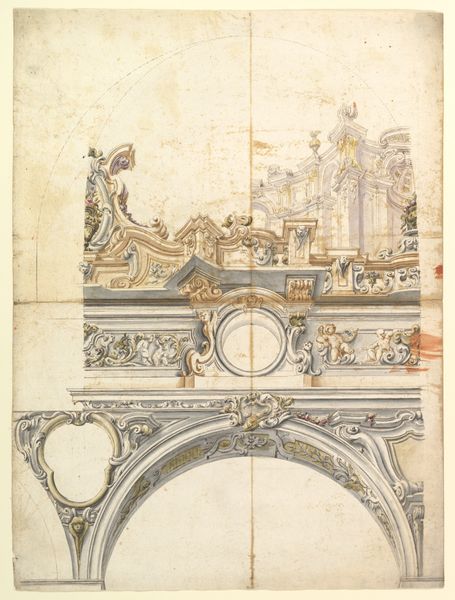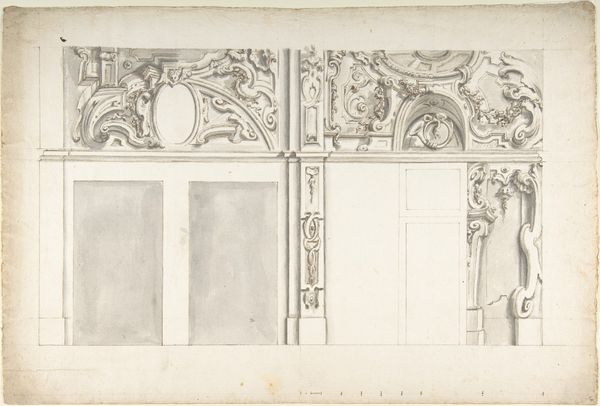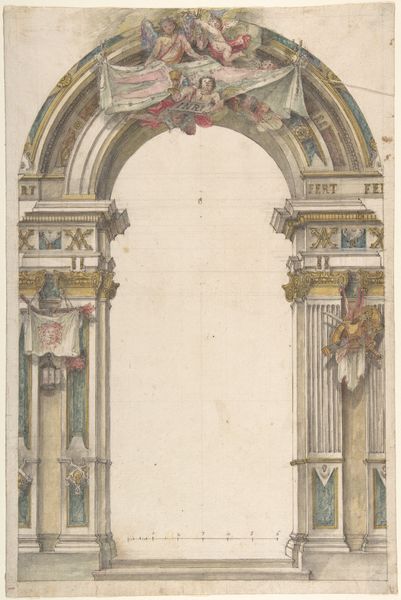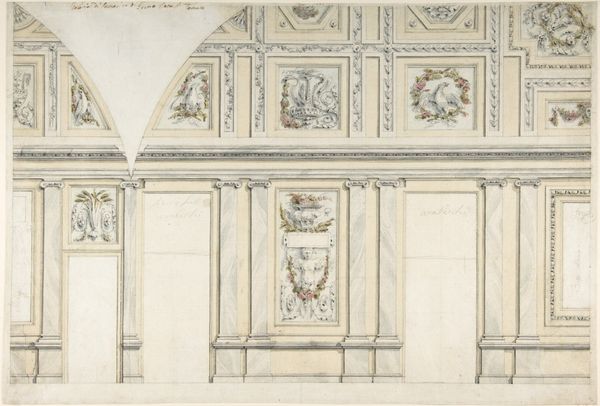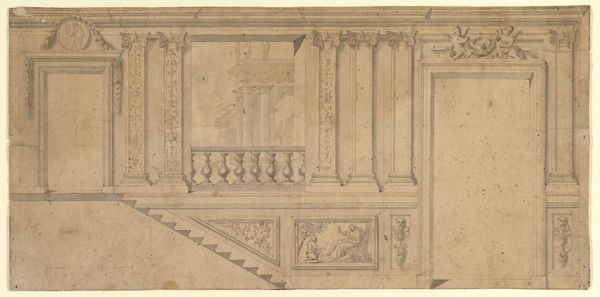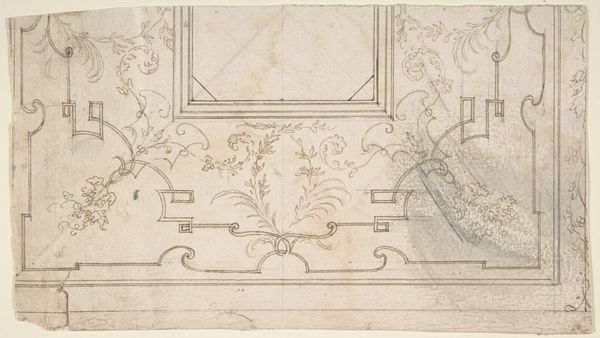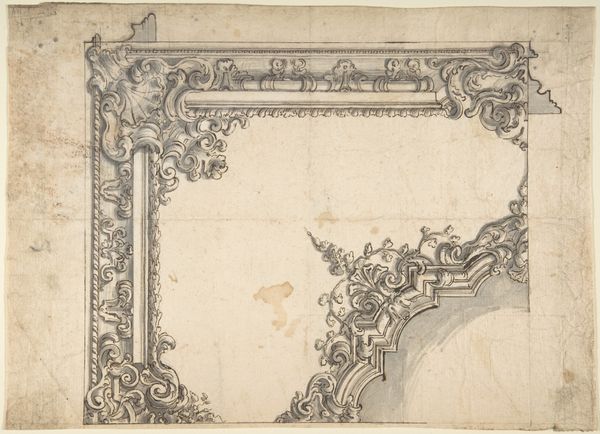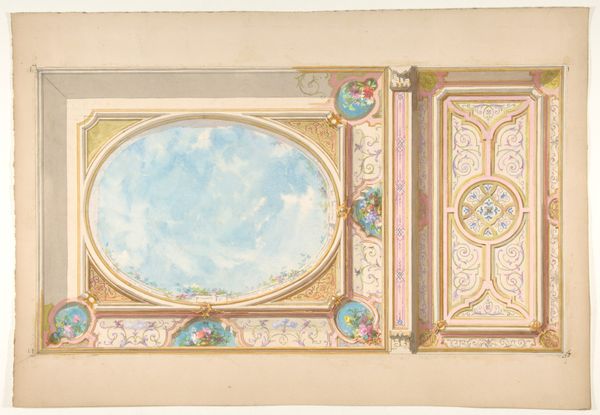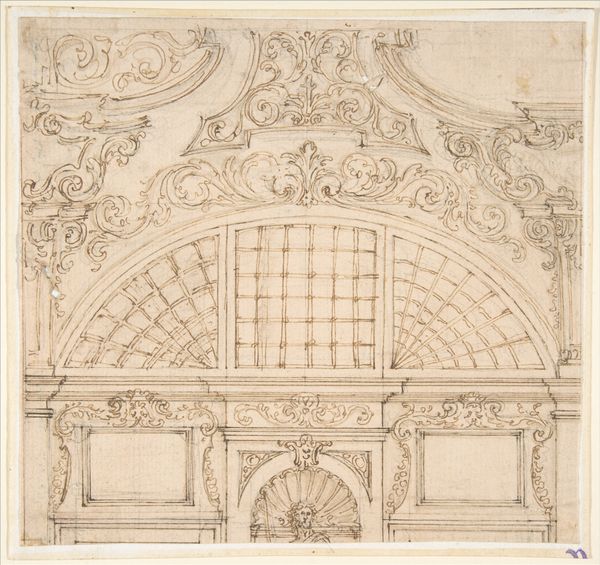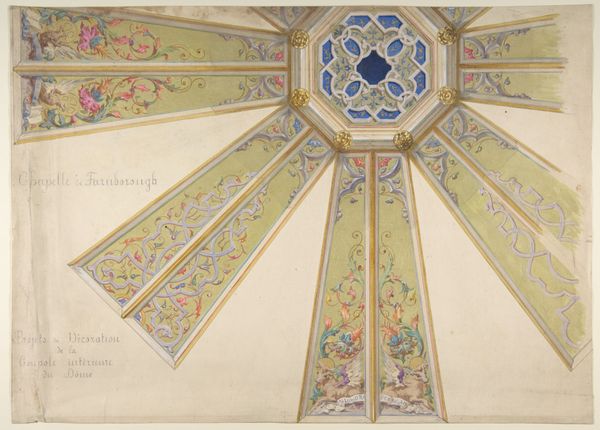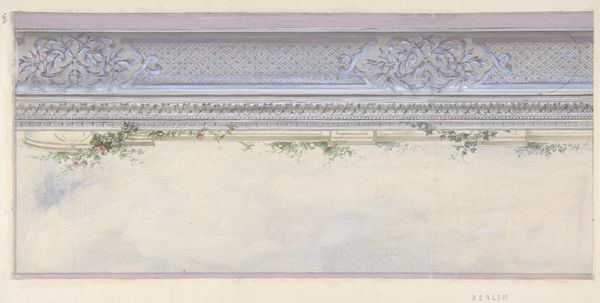
Design for Decorated Archway, Monaco Pavillion 1878
0:00
0:00
drawing, coloured-pencil, print, watercolor
#
drawing
#
coloured-pencil
#
water colours
# print
#
watercolor
#
coloured pencil
#
geometric
#
decorative-art
Dimensions: 8 x 11 in. (20.3 x 27.9 cm)
Copyright: Public Domain
Editor: So, this is Jules Lachaise's "Design for Decorated Archway, Monaco Pavilion" from 1878. It's a watercolor, colored pencil, and graphite drawing, or possibly a print now at the Met. I am really struck by the mix of detailed rendering and unfinished sketch here. It seems so intentional! What are your thoughts when you look at this? Curator: What intrigues me is the deliberate articulation of material and process. Lachaise lays bare the means of production; consider the juxtaposition of fully rendered ceramic details alongside the sketched, almost ghostly, architectural framework. Why present the labor involved so explicitly? Editor: I hadn't thought about the labor aspect so much. The ceramic decoration does pop, it has to be said. Are you suggesting it’s making a statement about craft versus industrial production, or something? Curator: Precisely! The "CERAMIQUE" inscription demands we acknowledge the artistry, the skill involved in ceramic production during a period of industrial transformation. It questions the hierarchy between decorative arts and so-called “high” art. What does this placement of “ceramique” draw our attention to, in terms of materiality? Editor: That’s interesting. It challenges what we might typically value in a design for an archway—its structure or form perhaps? Instead, it makes the surfacing and the skilled labor central. I never thought a pavilion plan could be a statement about production itself! Curator: Exactly. It reframes our understanding of architectural design as not solely about form, but as a showcase – and celebration – of materiality and craftsmanship, inviting us to question the role of labor in creating these spaces. It’s a potent visual commentary. Editor: I'll definitely look at design drawings differently from now on, thinking about what they reveal about the making process, not just the end result!
Comments
No comments
Be the first to comment and join the conversation on the ultimate creative platform.
